In the summer of 2012, 46,000 (some estimate up to 60,000) Uyghurs gathered regularly for three hours of interethnic agonistic struggle. They came from hundreds of miles away, old bearded men, rotund mothers, young men and women clad in sky blue. They came to engage in identity politics, but even more important, they came because for 90 minutes in that southern Ürümchi stadium, they were free to be proud of their complex subjectivities.
In this arena they were free to say what they wanted; to let off some steam. For three hours these fans could scream the old battle cry “VURRAAA” or “CHARGE!” as one voice while the armed police who provided security could only stand uncomfortably in their riot gear, ready to dive into armored vehicles at a moment’s notice. As one fan told me, it felt like that thing where you “slap someone while pretending that you are trying to kill a fly.” Soccer was providing an important release for people who felt blocked in their daily encounters with surveillance and voicelessness. Finally, in the sublimated atmosphere of the stadium, they were able to express their frustration.
Following the recent violence near Turpan, the local social expert Li Xiaoxia, director of the Institute of Sociology of the Xinjiang Academy of Social Sciences, noted that “religious extremism” can be transmitted during football games. Since the 1997 incidents in Ghulja (Yinning) in which the government shut-down of a Uyghur youth soccer league (along with other conflicts) led to protest and a violent overreaction, Uyghur gatherings have been tightly regulated. In some corners of Xinjiang where the misrecognition of “strike hard” campaigns is particularly intense, even the number of guests invited to weddings and funerals must be cleared by local officials. It is safe to assume that the gathering of 46,000 Uyghurs in one stadium is the largest number of Uyghurs in one place in the past decade. Over the course of the third-tier soccer league season, the number of 20- to 60-yuan tickets available for purchase was reduced. Empty seats that were reserved for employees of local danwei began to provide gaps in the uniform sky blue of the crowd. This year the stadium lies silent.
Yet as the under-13 Uyghur team defeated Korea and Japan in this month’s national games, the future looks bright for Uyghur footballers. Although the under-20 Uyghur team lost to Liaoning in the semifinals due to one misplaced scissor-kick, the theme song of the future of Xinjiang soccer still plays on.
Askar, the senior Uyghur rocker who came of age in Cui Jian’s 1990s, has lent his voice, ambitious songwriting, his screaming guitars and glam rock visage to Xinjiang soccer. His dueling Mandarin and Uyghur lyrics push forward the totemic spirit claimed by many Uyghurs: children of the wolf rather than of the dragon.
As you can see below in the translation from the Uyghur, throughout the lyrics he code-switches between Uyghur and Chinese registers (the Chinese variation is marked by parentheses). Although these differences are mostly minor, for Uyghur listeners they announce a fierce pride, an unflinching belief in the champion ethos of Uyghurs which is not fully formed in the Chinese.
The Xinjiang Soccer Song
VURRAAAA! VURRAAAA!
Because of you, because you are on this green grassland,
The original bravery (true potential) of heroes can be revealed,
Here on this green pasture (field),
The courage (ferocity) of the wolf can be revealed here,
The greatness (heroism) of our forbearers can be shown here,
Our voice will spread all over the earth,
Today we stand here tell you who we are,
We allow you to taste the spirit of champions
(Mashrap music)
WHO ARE WE
WE ARE CHAMPIONS
The wildness of Uyghur bodies is often thought of as common-sense in Chinese social science discourse. Uyghurs themselves have often internalized this civilizing discourse. As Liu Yi, deputy director of the Xinjiang Sports Bureau, has recently noted in discussing how similar Uyghurs are to Brazilians: “Wherever you go in Xinjiang, you see children happily playing soccer on all types of surfaces, such as dirt patches and grassland. They even play in their bare feet. They just love it.”
In a recent interview (9-minute mark in the video at top), top soccer commentator and earnest humanitarian Liu Jianhong said that he must admit that the bodies of minorities in Xinjiang (he knew there were more than Uyghur – but wasn’t quite sure who they were) are “relatively good.” “It is in their genes,” he said. “They like this bodily contact, they like confrontational sports; we Han people, we train our kids to walk, not run. They (minorities) probably don’t have this in their culture…. Two kids can just run out and wrestle. This is a true expression of natural masculinity.” Over the few minutes he and Askar discuss how the funding structure and national markets are really the only thing that holds Uyghur soccer development back.
From my vantage point, it is easy to feel drawn to Liu Jianhong – to see him as a good-hearted man. Nevertheless, the way he expresses the wildness of Uyghur bodies also seems symptomatic of a wider misrecognition of Uyghur intelligence. Since so few Uyghurs succeed in the Chinese world of science, technology, industry and academia, it is often assumed that they don’t have the aptitude for anything other than sports, performance and violence. Yet as I argued last week, the structure of the social world is often a driver of Uyghur life-goals rather than cultural aptitude. Techniques of the body are not mediated to such a thick extent by language and culture, so therefore they may appear as natural.
When Askar claims ownership of the wolf as the ethos of Uyghurs, the wolf he speaks of is not one that is defined in opposition to sheep. Rather it is a wolf that has a space in which to move freely despite difficult odds; a wolf that led Uyghurs from Mongolia to their oases in Northwest China 1500 years ago. One can only hope that someday Uyghur football players will allow us to taste the spirit of those champion wolves.
Beige Wind runs the website The Art of Life in Chinese Central Asia, which attempts to recognize and create dialogue around the ways minority people create a durable existence, and, in turn, how these voices from the margins implicate all of us in simultaneously distinctive and connected ways.







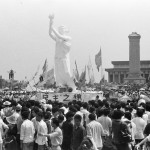









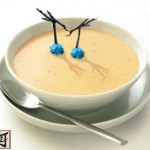
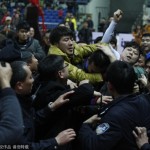
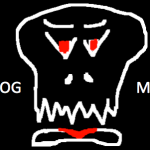

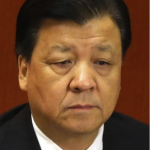
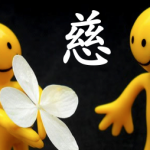
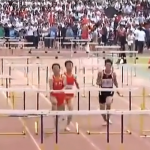


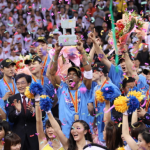


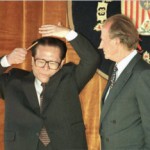

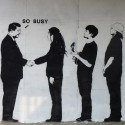

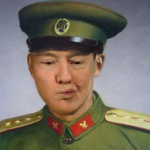





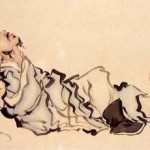

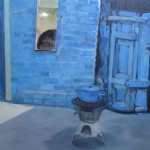

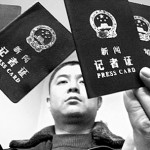

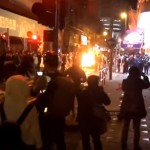

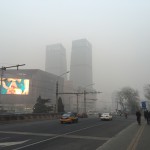

Some interesting info about the cancelled soccer league, but the writing is pretentious wank.
Great contribution, Jake.
I’m struck by the quote from Liu Jianhong on the bodies of Uyghurs/minorities – it strongly reminds me of the Belle Epoque European obsession with national masculinity and how other nations/races (be they Germans, to the French, or peoples of Asia/Africa/Americas to other Europeans) were more “virile” or “masculine” and so presented a threat.
Have you noticed any similar threads running through Han Chinese society?
Oh great. More pretentious wank.
Belle Epoque. . . suck my cock!
Hopefully this won’t set off Jake’s fine-grained wank detector, but risking that, here are my two cents on the relationship between sports and race in China.
I don’t think you need to compare contemporary China to late 19th century Europe to come up with similar dynamics. Speaking from personal experience this sort of cultural/racial essentialism is still going on at all-white high schools in middle of the United States; I’ve heard the way the preternatural skills of the one black kid on the basketball team are spoken of with awe and reverence. The way his body is seen as in a different category from everyone else.
China has it’s own unique genealogy of race and nationalism to deal with. Susan Brownwell’s book Training the Body for China (http://amzn.to/1cJfukd) is easily the best account of the history of competitive sports in China and how they link up with ideas of the nation. The short version has to do with the way Western colonialism introduced ideas of China as the “sick man of Asia,” how this racist discourse has been internalized, contested and reproduced in opposition to other nations. There is a nice article by Gladys Chong (http://dare.uva.nl/document/482104) that discusses this legacy by considering the way the hurdler Liu Xiang and others embody a new form of Chinese masculinity.
I’ll check that out, thanks!
Western colonialism?
I thought it was the Manchurians who made the Chinese their bitches? They even made the men grow pigtails!!!
The Manchurians burst into China yelling “Cook the man some fucking eggs bitch!” and instantly the Chinese were falling over themselves to obey.
The only Chinaman who showed the Manchurians some spunk was Koxinga. But he had a Japanese mum who raised him not to be a kowtowing coward.
Nature versus nurture – not much of an argument when you’re talking about the Han, eh bro?